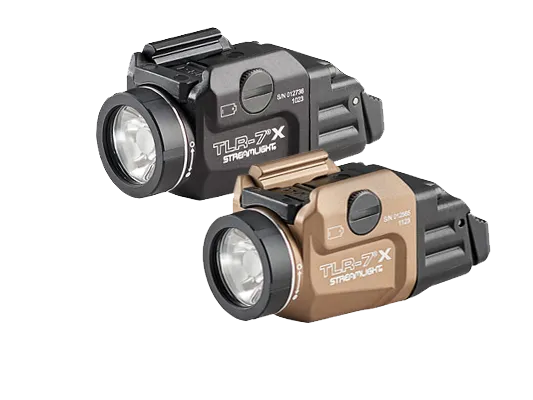Firearm ammunition is the lifeblood of any firearm, providing the necessary power to propel a projectile towards a target. Whether you are a seasoned shooter, a hunter, or a new firearm owner, understanding the intricacies of ammunition is crucial for safety, performance, and effective use. This guide will delve into the various aspects of firearm ammunition, including its types, components, popular calibers, reloading, and purchasing considerations.
1. Introduction to Firearm Ammunition:
Firearm ammunition, commonly referred to as cartridges or rounds, consists of several key components: the case, primer, propellant, and bullet. The design and composition of these components vary based on the type and intended use of the ammunition.
2. Types of Firearm Ammunition:
Ammunition comes in several types, each designed for specific purposes:
- Centerfire Ammunition: This type uses a primer located at the center of the cartridge base and is commonly used in rifles, shotguns, and handguns. It is reloadable and includes most popular calibers.
- Rimfire Ammunition: The primer is located within the rim of the cartridge base. Rimfire ammunition is typically used in small-caliber firearms like the .22 LR. It is not reloadable but is known for its low cost and suitability for beginners and small-game hunting.
- Shotgun Shells: These are specialized cartridges used in shotguns, containing multiple projectiles (shot) or a single slug. They come in various gauges and lengths.
- Specialty Ammunition: This category includes tracer rounds, blanks, and frangible ammunition, each designed for specific applications such as training, signaling, or reducing ricochet risks.
3. Components of Ammunition:
Understanding the components of a cartridge helps in selecting the right ammunition for your needs:
- Case: Typically made of brass, steel, or aluminum, the case holds all the other components together.
- Primer: A small charge of explosive material that ignites the propellant when struck by the firearm’s firing pin.
- Propellant: Commonly known as gunpowder, the propellant burns rapidly to generate gas pressure that propels the bullet out of the barrel.
- Bullet: The projectile that is expelled from the firearm’s barrel. Bullets come in various shapes, sizes, and materials, each designed for specific purposes.
4. Popular Calibers and Cartridges:
Various calibers and cartridges are popular for different types of shooting activities:
- .22 Long Rifle (LR): Known for its low recoil and cost, the .22 LR is ideal for training, target shooting, and small-game hunting.
- 9mm Luger: Widely used in handguns and submachine guns, the 9mm is favored for its balance of power, recoil, and magazine capacity.
- .45 ACP: A powerful handgun cartridge known for its stopping power and use in many iconic pistols like the M1911.
- 5.56x45mm NATO / .223 Remington: These are versatile rifle cartridges used in AR-15 style rifles, suitable for both military and civilian use.
- .308 Winchester / 7.62x51mm NATO: Popular for hunting and long-range shooting, offering excellent accuracy and power.
- 12 Gauge: The most common shotgun gauge, versatile for hunting, sport shooting, and home defense.
5. Ballistics and Performance:
Ballistics is the study of the dynamics of projectiles. Key ballistic factors include:
- Velocity: The speed of the bullet as it exits the barrel, typically measured in feet per second (fps).
- Energy: The kinetic energy of the bullet, important for its stopping power.
- Trajectory: The path the bullet takes after leaving the barrel.
- Penetration and Expansion: Critical for understanding how bullets behave upon impact, important for hunting and self-defense.
6. Reloading Firearm Ammunition:
Reloading, or handloading, involves assembling your own ammunition from individual components. This process can save money, allow customization, and provide a better understanding of ammunition performance. However, it requires precise equipment, knowledge, and adherence to safety protocols.
7. Safety Considerations:
Safety is paramount when handling and using ammunition:
- Storage: Store ammunition in a cool, dry place away from direct sunlight and moisture. Use lockable containers to keep it out of reach of children.
- Handling: Always handle ammunition with clean hands, avoiding oil or solvent contamination.
- Transport: Use appropriate containers to transport ammunition, ensuring it is secure and protected.
- Misfires and Hangfires: If a round does not fire, keep the firearm pointed in a safe direction and wait a few moments before safely ejecting the cartridge.
8. Purchasing Tips:
When buying ammunition, consider the following tips:
- Know Your Firearm: Ensure you are purchasing the correct caliber and type of ammunition for your specific firearm.
- Quality Brands: Opt for reputable brands known for their quality and reliability, such as Federal, Winchester, Remington, and Hornady.
- Quantity: Buying in bulk can save money in the long run, especially for high-volume shooters.
- Price Comparison: Shop around and compare prices from different retailers, including online stores, local gun shops, and sporting goods stores.
- Check Reviews: Read reviews and seek recommendations from experienced shooters to find the best ammunition for your needs.
Conclusion
In conclusion, understanding firearm ammunition is essential for safe and effective shooting. By familiarizing yourself with the types, components, popular calibers, reloading practices, safety considerations, and purchasing tips, you can make informed decisions that enhance your shooting experience. Whether you are a hunter, target shooter, or firearms enthusiast, having the right ammunition is key to achieving your goals and ensuring a rewarding and safe experience. visit Nettiammo.com

